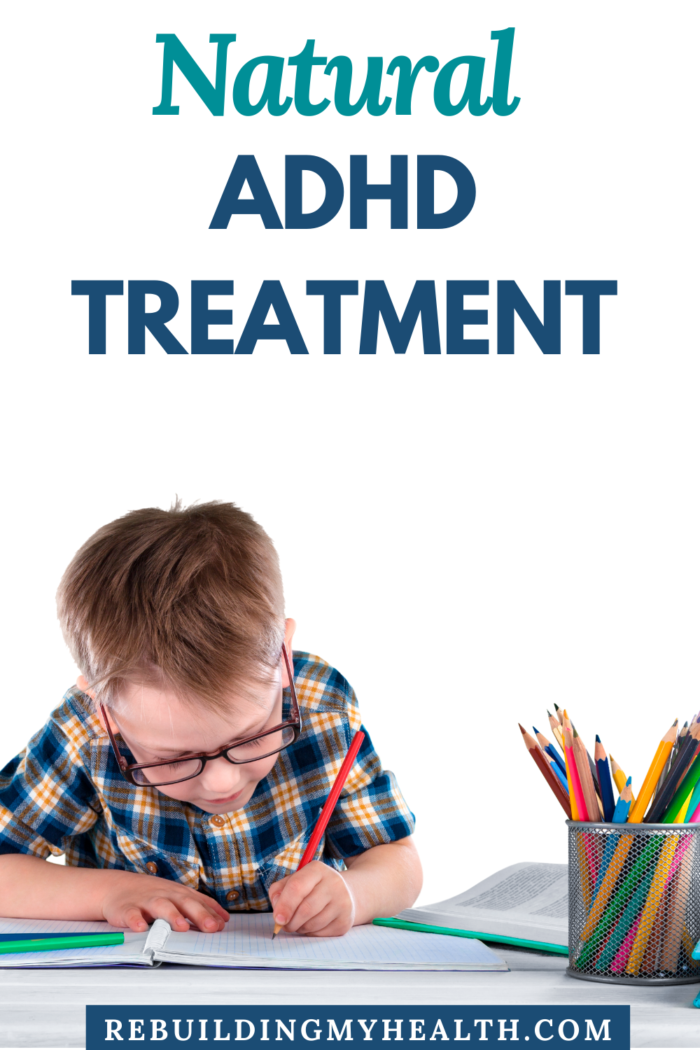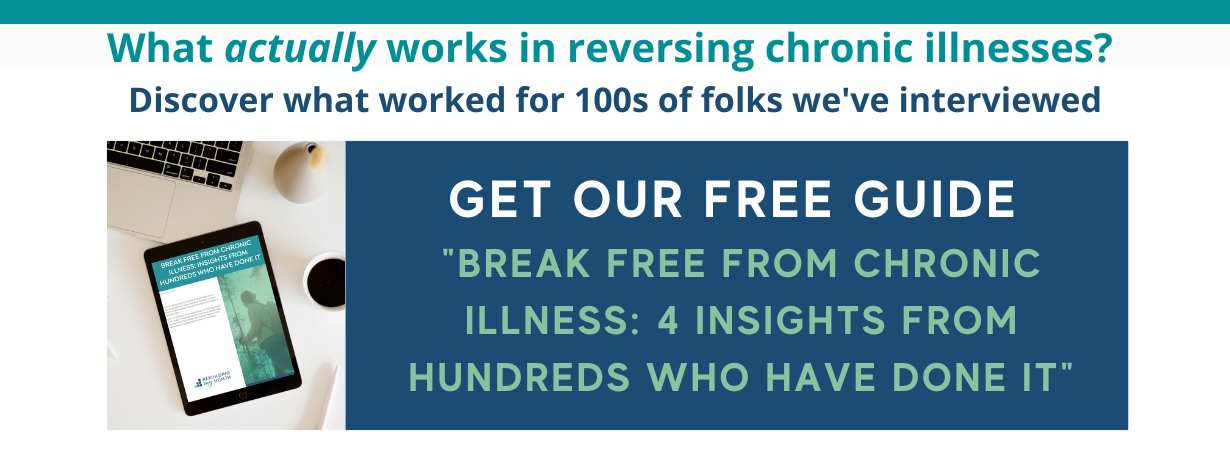One Family’s Game-Changing Natural ADHD Treatment
Dana knew that her son, at age 4, seemed more active and energetic than other kids his age. Beyond that, he was impulsive, defiant and experienced daily meltdowns.
“He just couldn’t control or calm his mind and body,” she says. “He was very hyperactive, and with that hyperactivity, came impulsivity, but also came a sort of defiance, a lack of listening. The worst part of all of it was probably the emotional regulation challenges.”
She recalls one particularly gut-wrenching incident while shopping at Costco. After a meltdown, the aisle was littered with broken spaghetti sauce jars.
The disruption affected the entire family, including Dana’s younger son.
“It had a massive impact on our family,” she says. “I was miserable. My son was miserable, but everyone in our family was, and we just didn’t want to feel like that. It wasn’t the life that I wanted for myself when I thought about having a family.”
An ADHD Diagnosis
The family sought help from a developmental psychologist, who completed an evaluation over several sessions. Within a few weeks, Dana’s son was diagnosed with ADHD.
While age 4 seems early to be diagnosed, Dana now believes it allowed them to begin interventions – and reach lasting solutions – sooner.
Out the outset, they began with conventional ADHD treatment – medication. Concurrently, they were trying therapy as well. And for a while, her son was calmer.
“He was able to focus better at school,” she says. “He even started playing really nicely with his younger brother at home, which never ever happened.”

ADHD Medication Loses Effectiveness
But over time, the medication began to lose its effectiveness. In response, the physician increased the dosage several times. When it was clear it was wearing off in the afternoon, they added a short-acting medication for ADHD.
However, with increasing doses came difficulty sleeping, more anxiety and a lack of appetite. The family added a third medication to help their son sleep.
When doctors suggested a fourth medication, for anxiety, Dana grew concerned about this amount of pharmaceuticals for a child so young.
“When the doctor handed me that fourth prescription that was basically treating the symptoms of the other medications, that’s sort of when I was done. We really couldn’t continue on this path anymore,” she says.
Natural ADHD Treatment
Dana began searching for natural ADHD treatments to reduce her son’s symptoms. In Facebook groups, she found mentions of supplements that worked for some families. But ultimately, her research pointed to diet as a significant intervention for ADHD.
“I started to uncover all of these research studies and all of the science behind it,” she says. “It was just mind-boggling.”
They began with diet to reduce inflammation, which is associated with ADHD. Gradually, they removed gluten, dairy, soy, sugar, and artificial flavors and colors. They also focused on organic foods, following the Dirty Dozen and Clean 15 lists. And they switched to less inflammatory cooking oils such as avocado and olive.
“Some kids literally a week after taking out gluten can see a huge change, others three to six months,” Dana says. “But for my son, it was within a few weeks. And the first thing we saw was a reduction in tantrums. The length that they went for was reduced, the severity was reduced, the frequency was reduced. He became a lot more flexible. I just saw this calmness come over him.”
The ADHD Gut-Brain Connection
Dana also uncovered significant links between the gut and brain.
“There is a huge connection between our gut and how our kids function, especially those with ADHD. And it comes back to that gut-brain connection. The gut’s responsible for making 95 percent of our serotonin and 50 percent of our dopamine, which are our happy feel-good neurotransmitters or hormones in our body that regulate our emotions and maintain our mood balance and our cognitive function.”
Dana explains that the gut is linked to the frontal lobe, which is involved in attention, focus, executive function and problem-solving.
To understand their son’s digestive health, they ran extensive lab testing. However, they had to go outside conventional medicine because most doctors don’t look for these types of indicators.
Lab testing uncovered several critical pieces of the puzzle:
- Parasites, Candida overgrowth, leaky gut and inflammation – They began addressing each aspect of his gut dysbiosis to improve his gut-brain connection.
- Food sensitivities – They learned that a seemingly healthy food, raspberries, was among his personal sensitivities. If the berries were spiking inflammation, then they were certainly not healthy for Dana’s son.
- Nutritional deficiencies – They uncovered specific nutrients he needed, including B vitamins.
- High levels of pyrroles – Testing also uncovered high levels of what’s called pyrroles, which can contribute to low levels of B6 and zinc, contributing to poor tolerance for stress and mood swings.
“If someone has these elevated crypto pyrrole levels in the urine, it actually results in things like poor tolerance to physical and emotional stress, poor anger control, mood swings, and poor short-term memory,” Dana says. “That was a massive finding for him because we were able to boost up a little bit of B6 and zinc to level out those pyrroles.”
The tests that were diagnostic for Dana’s son were stool, urine (organic acid), food sensitivity and crypto-pyrrole testing (also urine). Dana typically turns to food sensitivity testing through Vibrant Wellness.
A Calmer, More Focused Kid after ADHD
About four months after making these changes, Dana’s son was a different kid. His tantrums reduced, he was more flexible and he was calmer.
They weaned their son off medication over several months, which Dana recommends doing only under a doctor’s guidance.
“He’s in middle school now and he’s thriving,” she says. “The two most important things: our house is peaceful and he’s happy. All you want to see is your child happy and being successful in whatever that success looks like in their life.”
Her family’s journey inspired Dana to completely switch careers from being an accountant to addressing ADHD in kids. She’s now a holistic health and nutrition practitioner, the CEO and founder of the ADHD Thrive Institute and the creator of the ADHD Thrive Method 4 Kids program. Her mission is to help families reduce ADHD symptoms naturally so that children with ADHD can thrive at home, at school, and in life.
Where to find Dana Kay and ADHD resources:
Her Facebook group, ADHD Parent Nutrition Support Group
Get a copy of our free guide, Break Free from Chronic Illness: 4 Insights from Hundreds Who Have Done It.
The information on this site is for educational and inspirational purposes only and is not intended to replace the advice of qualified professionals. Keep in mind that what works for one person may not work for another. Always consult your healthcare practitioners before beginning new approaches or treatments. Some links on Rebuilding My Health may be affiliate links. This means that we may receive a commission - with no additional cost to you - if you make any purchases using those affiliate links. Rebuilding My Health is a participant in the Amazon Services LLC Associates Program. Learn more.


